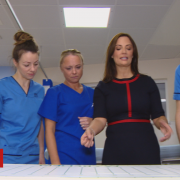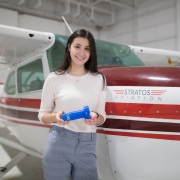Poultry Hawk takes flight: Olar farmer’s invention makes life easier for chicken growers
OLAR — Growing up as a dairy and grain farmer, eight-year Olar poultry farmer Chad Brubaker had many opportunities to work on equipment.His experience on the farm instilled in him a desire to make life a little bit easier for himself and for his fellow chicken farmers.As co-owner of Brubaker Farms, Brubaker owns two poultry houses with a total of 30,000 square feet for the chickens.
The farm, which raises poultry for Columbia Farms, typically has about 72,000 chickens, or about five flocks, a year.Brubaker is well acquainted with the time-consuming daily activity of what is commonly referred to as “walking the birds,” a less than envious task of going through the poultry houses and collecting the dead chickens.”In that first year of farming, the summer was very hot, and we had some pretty high mortality,” Brubaker said. “Right away we were hauling several hundred birds a day out during the last couple of weeks of that first flock.””I began to think there has got to be a better way than carrying buckets outside the poultry house,” he said. “I began thinking then about something to help me with that chore.”What resulted from that brainstorming was Brubaker’s Poultry Hawk.”I began to tinker, thinking a trolley system would work,” the farmer said.In the spring and the winter of 2015, Brubaker began to put a trolley together.”My idea was remote control would really be ideal powered off a battery,” he said. “”One day I had a little rail system and I hit the button on the remote, and the Poultry Hawk came to life.”Brubaker quickly realized he had a piece of equipment from which many other poultry farmers could benefit.”I took the idea to market as fast as I could,” he said, noting that from the time he got the idea to the time it went to market was about a year.






